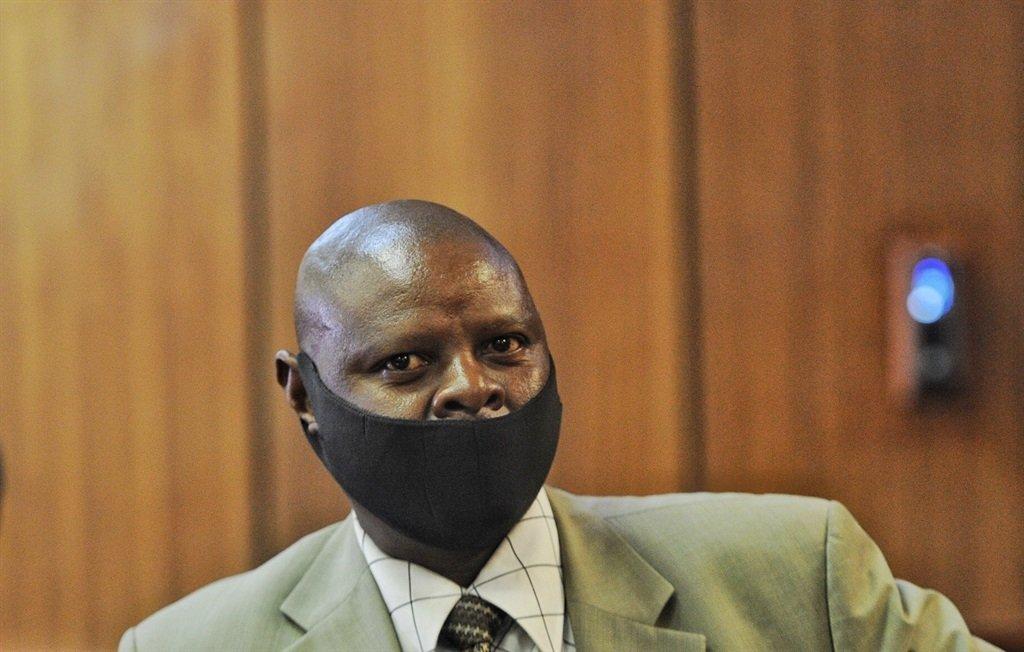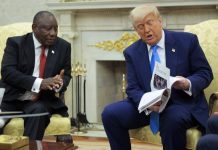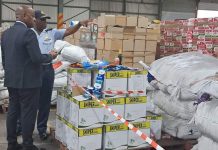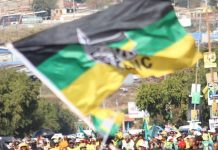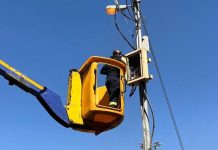Africa-Press – South-Africa. The testimony of Sergeant Thabo Mosia as the State’s first witness in the Senzo Meyiwa murder trial has likely left the court with more questions than answers.
Mosia was the first forensic detective on the crime scene after the former Orlando Pirates and Bafana Bafana goalkeeper was shot in the Vosloorus, Boksburg, home of his girlfriend Kelly Khumalo on 26 October 2014.
Mosia’s evidence-in-chief set out what evidence was found at the crime scene, how it was collected and where it was stored.
After arriving at the crime scene at around 00:20 on 27 October 2014, Mosia said he was walked through the crime scene by former Gauteng head of detectives Brigadier Philani Ndlovu.
Mosia took several photographs of the crime scene and then collected three pieces of visible evidence, including a bullet projectile and a jacket as well as a scotch hat that allegedly belonged to one of the accused.
This evidence was found in the kitchen where Meyiwa was shot.
Before leaving the scene, Mosia contacted the provincial crime scene management task team to assist with collecting evidence.
Hours later, he returned with the task team, where he recovered a second projectile that was hidden behind glass jars on a countertop in the kitchen.
Senzo Meyiwa: Defence lawyer drops application to record ‘irregularity’ with second docket
More photographs were taken, as well as several DNA swabs. Mosia testified that all the evidence collected during the early hours of Sunday morning when he first attended the scene was kept in a safe in his office and only placed in the exhibit register the following day at around 08:30, because the register clerk was not available on weekends.
Concessions
During cross-examination, Mosia conceded that the bullet jacket collected from the scene had not been photographed once it was placed in an exhibit bag, which is standard procedure.
He made this same mistake when bagging and tagging the hat found in the kitchen.
Advocate Zandile Mshololo, representing accused number five, put it to Mosia that the bullet jacket was never retrieved from the crime scene.
This was dismissed by Mosia, who had previously shown a photograph of the bullet jacket, which was found on the kitchen floor.
Mshololo also pointed out that Mosia did not tell the court that the evidence was kept in his safe during his evidence-in-chief.
Mshololo said:
Advocate Malesela Teffo, who presented four of the accused before withdrawing from the matter, had also claimed that the crime scene was tampered with and evidence had been planted. This was denied by Mosia.
During re-examination, the State’s prosecutor, advocate George Baloyi, referred to questions by Mshololo that the crime scene was tampered with and evidence planted, referring to a projectile which allegedly links the accused to the crime.
Mosia said he had no reason to tamper with the evidence and that the accused were not known to him.
The accused were arrested more than five years after the crime took place.
Mosia also conceded that he did not collect DNA or attempt to lift fingerprints from the door, which was allegedly used by the accused to gain entry into the house.
While the defence said this was a failure in the investigation, Mosia maintained that a decision had been taken not to check for fingerprints or DNA on the door, because information suggested that many people used the door.
The inference was that it would be futile to attempt to collect such evidence because it would be unlikely to produce any leads because of the number of people, apart from the accused, who used the door daily.
Perhaps more damning was that gunshot residue tests were not performed on anyone in the house at the time that Meyiwa was shot.
Mosia testified that, according to the information he received, he did not think it necessary to conduct such tests.
Conflicting testimony
While this testimony does not appear to have a material effect on the case, the defence also pointed out a number of contradictions between Mosia’s evidence and the affidavit deposed by Ndlovu. Ndlovu, who has since died, deposed an affidavit which was contained in what has become known as the second docket. There were two dockets opened for the murder of Meyiwa.
The first was opened in 2014 when the soccer player was shot and killed, while the second was registered in 2019. The first docket is currently before the court in which Muzikawukhulelwa S’Tembu Sibiya, Bongani Sandiso Ntanzi, Mthobisi Prince Mncube, Mthokoziseni Ziphozonke Maphisa and Fisokuhle Ntulijave Ntuli are the accused.
The second docket allegedly contains different findings and an entirely different list of suspects. In Mosia’s evidence-in-chief, he testified that he was called to the scene by Ndlovu, who didn’t give him the address but instead told him to go to a nearby hospital to meet police officers who would take him to the crime scene.
Affidavit contradicts forensic detective’s testimony at Senzo Meyiwa trial, but is it material?
According to Ndlovu’s affidavit, he gave Mosia the address of the crime scene and did not instruct him to go to the hospital. Ndlovu also claimed that he did not help Mosia at the crime scene by pointing out exhibits and areas of interest, as he was not in charge of the crime scene. This was also in contradiction to what Mosia told the court.
Mosia maintained Ndlovu had helped him and said this was evidenced by his crime scene report. While the report was not signed by Ndlovu, it did contain his details, and according to Mosia, a portion of the report was even completed by Ndlovu as he requested that the detective attend the crime scene.
Mosia also deposed a statement to the second docket, although he was under the impression that the statement related to the first docket. In his second statement, Mosia said the crime scene could have been compromised, given the four-hour gap between the crime and police arriving on the scene. In his evidence-in-chief, he maintained that the scene had not been tampered with, given the evidence he found.
While a lot of the allegations of planted evidence and tampering remain conjecture at this point, there was evidence that certain functions were not performed by police or not done by the book. This, along with the contradictions between two police officers at the scene, is likely to raise more questions than answers.
For More News And Analysis About South-Africa Follow Africa-Press

